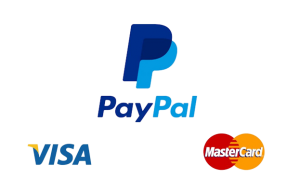Implementing effective data-driven personalization in email marketing goes beyond basic segmentation and static content. It requires a strategic, technical, and tactical approach to harness customer data intricately, craft dynamic content, and continuously optimize based on real-time insights. In this comprehensive guide, we will explore how to elevate your personalization efforts with actionable, expert-level techniques, focusing on the critical aspects of data analysis, dynamic content design, automation workflows, machine learning integration, privacy compliance, testing, and ongoing optimization. This deep dive is designed to equip marketers, data analysts, and developers with the tools and knowledge needed to drive customer engagement, loyalty, and revenue.
Table of Contents
- Analyzing and Segmenting Customer Data for Personalization
- Designing Dynamic Email Content Based on Data Insights
- Setting Up and Automating Data-Driven Personalization Workflows
- Applying Machine Learning Models to Enhance Personalization
- Ensuring Data Privacy and Compliance in Personalization
- Testing and Measuring the Effectiveness of Personalized Campaigns
- Common Pitfalls and How to Avoid Them in Data-Driven Personalization
- Final Integration and Continuous Optimization
1. Analyzing and Segmenting Customer Data for Personalization
a) Collecting and Cleaning Email Engagement Data (Opens, Clicks, Conversions)
The foundation of effective personalization is high-quality, granular engagement data. Start by integrating your email platform with your CRM or data warehouse to ensure real-time data flow. Use tools like Segment or Tealium to collect detailed event data, including open rates, click-throughs, conversions, and time spent on content. Implement server-side tracking to capture email opens accurately, as client-side tracking can be blocked by ad blockers or privacy settings.
Next, perform data cleaning: remove duplicates, handle missing values, and normalize data formats. Use SQL or Python scripts to filter out bot traffic, and validate engagement timestamps. This robust data foundation ensures your segmentation and personalization are based on trustworthy insights.
b) Identifying Key Customer Segments Based on Behavior and Preferences
Leverage your cleaned data to identify meaningful segments. Start with basic behavioral segmentation—frequency of opens, purchase history, and browsing patterns. Complement this with preference data from surveys or preference centers.
Use cohort analysis to track groups over time, revealing lifecycle stages. For example, distinguish high-value, loyal customers from occasional browsers. Incorporate demographic data such as age, location, or device type for multi-dimensional segmentation.
c) Using Advanced Segmentation Techniques: RFM Analysis, Clustering Algorithms
Implement Recency, Frequency, Monetary (RFM) analysis to classify customers into tiers. Calculate R, F, and M scores using SQL window functions or Python pandas. For example, assign scores from 1-5 based on quartiles, then combine into segments like “High-Value Loyal” or “At-Risk.”
| RFM Dimension | Scoring Method | Application |
|---|---|---|
| Recency | Days since last purchase | Identify active vs. dormant customers |
| Frequency | Number of purchases in period | Segment loyal customers |
| Monetary | Total spend | Prioritize high-value segments |
For clustering, employ algorithms like K-Means or hierarchical clustering using Python’s scikit-learn. Normalize features before clustering, and validate clusters through silhouette scores to ensure meaningful segmentation.
d) Practical Example: Creating a High-Value Customer Segment for Targeted Campaigns
Suppose your data shows a cluster of customers with recency < 30 days, frequency > 10 purchases/month, and monetary > $500/month. Use this profile to define a “High-Value” segment.
Create a dynamic segment in your ESP or CDP that updates in real time as data flows in. Use this segment to send exclusive offers, early access, or loyalty rewards, increasing lifetime value and engagement.
2. Designing Dynamic Email Content Based on Data Insights
a) Implementing Conditional Content Blocks within Email Templates
Use your email platform’s dynamic content features—such as AMP for Email, or personalization tokens combined with conditional logic—to craft tailored messages. For instance, in Mailchimp or Salesforce Marketing Cloud, set rules like:
Example: Display product recommendations only if the customer has viewed similar items in the past 30 days.
Implement nested IF statements or use merge tags with conditional statements to control content blocks based on customer data fields such as recent browsing history, purchase categories, or loyalty status.
b) Leveraging Real-Time Data to Update Offers, Recommendations, and Messaging
Integrate your email systems with real-time APIs that query your customer data platform just before send time. For example, use a webhook that fetches the latest top-selling products personalized by recipient’s browsing history. This requires setting up:
- API endpoints that deliver personalized product lists
- Automation scripts that inject this data into email content dynamically
- Testing end-to-end latency to ensure data freshness
This approach ensures that recipients see the most relevant, timely offerings, significantly increasing click-through and conversion rates.
c) Techniques for Personalizing Subject Lines and Preheaders Using Customer Data
Personalization at the subject line level can dramatically improve open rates. Use data points such as recent browsing, loyalty tier, or location:
- Subject Line Example: “Hey {{first_name}}, Your Favorite Running Shoes Are Back in Stock”
- Preheader Example: “Exclusive offer for our top {{loyalty_tier}} members—just for you”
Test multiple variants through A/B testing to determine which data-driven personalization tactics yield the best open rates.
d) Case Study: A Fashion Retailer Dynamically Tailoring Product Images per Recipient
A leading fashion retailer integrated their customer preferences and browsing data into their email templates. Using their ESP’s dynamic image blocks, they displayed:
- Product images matching the recipient’s favorite categories (e.g., athleisure, formal wear)
- Color variants preferred by the customer based on past clicks
- Size recommendations based on recent purchase history
This personalization led to a 35% increase in click-through rates and a 20% lift in conversions, demonstrating the power of dynamic, data-driven content.
3. Setting Up and Automating Data-Driven Personalization Workflows
a) Configuring Triggers Based on User Actions and Lifecycle Stages
Identify key events such as cart abandonment, product views, or loyalty milestones. Use your ESP’s automation builder or a dedicated workflow engine to set triggers:
- Abandoned Cart: Trigger a personalized recovery email 1 hour after cart abandonment.
- Post-Purchase: Send a thank-you email with personalized product recommendations after purchase confirmation.
- Loyalty Milestone: Celebrate customer anniversaries or milestones with tailored offers.
b) Building Multi-Step Automation Sequences that Adapt Content Dynamically
Design sequences that respond to recipient interactions. For example:
- Initial email offers personalized product suggestions based on recent activity.
- Follow-up email adjusts content based on whether the recipient clicked or ignored the first message.
- Final nudge with personalized discounts, dynamically calculated based on customer loyalty tier and engagement history.
Employ conditional logic within workflows to ensure content stays relevant at each step, reducing unsubscribe rates and increasing conversions.
c) Integrating Customer Data Platforms (CDPs) with Email Marketing Tools
Establish seamless data flow by connecting your CDP (like Segment or mParticle) to your ESP via APIs or native integrations. Use event-driven architectures where customer actions automatically update their profile in the CDP, which then triggers personalized email sequences.
This setup enables real-time personalization, such as showing current favorite products or adjusting messaging based on recent engagement metrics.
d) Step-by-Step Guide: Automating Abandoned Cart Recovery with Personalized Messages
- Step 1: Detect cart abandonment event via your website tracking.
- Step 2: Send an immediate trigger email with recipient-specific cart details and personalized product images.
- Step 3: Set a follow-up email 24 hours later, highlighting items left in the cart, using dynamic content blocks that reflect the actual abandoned items.
- Step 4: Use A/B testing on different messaging approaches and time delays to optimize recovery rates.
- Step 5: Incorporate real-time inventory data to show available stock, avoiding disappointment and fostering urgency.
This process ensures personalized, timely, and relevant communications that significantly recover lost sales, with clear ROI tracking through conversion attribution.
4. Applying Machine Learning Models to Enhance Personalization
a) Training Predictive Models for Product Recommendations and Churn Prediction
Leverage historical interaction data to train supervised learning models. Use algorithms such as Random Forests or Gradient Boosting Machines for churn prediction, and collaborative filtering for recommendations.
For example, prepare feature sets including:
- Customer engagement frequency
- Recency of last purchase
- Average order value
- Browsing categories
Train models using scikit-learn or TensorFlow, validate with cross-validation, and deploy via APIs to score customers in real time, informing personalization strategies.
b) Deploying Collaborative Filtering and Content-Based Filtering Algorithms
Implement collaborative filtering by analyzing user-item interaction matrices to identify similar users or items. Use matrix factorization techniques like Singular Value Decomposition (SVD). Content-based filtering leverages product attributes—such as category, brand, or style—to recommend



